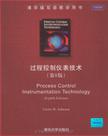过程控制仪表技术
出版时间:2009-9 出版社:约翰逊(Curtis D.Johnson) 清华大学出版社 (2009-09出版) 作者:约翰逊 页数:694
Tag标签:无
前言
由Curtis D.Johnson教授(LIniversity of Houston)编著的《过程控制仪表技术》一书自出版以来受到广泛的欢迎,目前该书已出到第8版,其中添加了许多自动化领域新技术发展的内容,实现了与最新科技发展同步的目标。全书共分为两部分,第一部分为前6章,作者从人们对生产设备手动操作的实际经验出发,系统地介绍了控制原理、控制设备和控制系统的基本概念。在测量信号的变换和处理方面,把工业仪表中的模拟电路、可编程控制器(PLC)及信号采集系统中的数字电路结合工业电子学中的基本理论融会贯通加以介绍。在测量信号的获取方面,重点对温度、机械量和光学传感器的原理、器件、特性和应用进行了详细的分析。书中第二部分为后6章,首先讲述了控制信号的类型和执行器,接着重点介绍了离散、连续、计算机及总线网络控制系统的构成、特点和技术指标。结合系统的要求,讲解了PLC的原理和编程方法,位式控制、PID概念及模拟调节器,工业控制计算机硬件、软件的配置等内容。最后介绍了串级和多变量控制系统以及系统的调节质量评定和调节参数的整定方法。尽管涉及工业测量和调节控制内容的同类教材很多,但这本书有它自己的特点:(1)测量技术和控制技术相结合。把工业电子学的知识和工业仪表中的模拟电路、信号采集系统中的数字电路相结合;把被控系统的特性和调节器的功能相结合。这样就为控制系统中的装置与系统、理论与实际相结合打下了基础,克服了目前我国自动化专业教育中理论、系统、装置、应用互相分割的状况。(2)例题习题非常丰富。书中每章结束都有习题,而且在每个章节中还附有大量的例题。这些例题和习题都是围绕核心概念,结合实际应用的典型问题,通过解题可以使读者加深对基础理论的理解,学会设计和调试的方法,扩展应用的思路。
内容概要
《过程控制仪表技术(第8版)》共分为两部分,第一部分为前6章,作者从人们对生产设备手动操作的实际经验出发,系统地介绍了控制原理、控制设备和控制系统的基本概念。在测量信号的变换和处理方面,把工业仪表中的模拟电路、可编程控制器(PLC)及信号采集系统中的数字电路结合工业电子学中的基本理论融会贯通加以介绍。在测量信号的获取方面,重点对温度、机械量和光学传感器的原理、器件、特性和应用进行丁详细的分析。书中第二部分为后6章,首先讲述了控制信号的类型和执行器,接着重点介绍了离散、连续、计算机及总线网络控制系统的构成、特点和技术指标。结合系统的要求,讲解了PLC的原理和编程方法,位式控制、PID概念及模拟调节器,工业控制计算机硬件、软件的配置等内容。最后介绍了串级和多变量控制系统以及系统的调节质量评定和调节参数的整定方法。
作者简介
作者:(美国)约翰逊(Curtis D.Johnson)
书籍目录
1 INTRODUCTION TO PROCESS CONTROL1 Instructional Objectives 1 1.1 Introduction 1 1.2 Control Systems 2 1.3 Process-Control Block Diagram 6 1.4 Control System Evaluation 10 Regulation 1 1.4.4 Evaluation Criteria 1.5 Analog and Digital Processing 14 1.6 Units, Standards, And Definitions 22 1.7 Sensor Time Response 36 1.8 Significance and Statistics 40 Summary | Problems | Supplementary Problems 2 ANALOG SIGNAL CONDITIONING 53 Instructional Objectives 53 2.1 Introduction 53 2.2 Principles of Analog Signal Conditioning 54 2.3 Passive Circuits 58 2.4 OperationalAmplifiers 83 2.5 OP Amp Circuits in instrumentation 89 2.6 Design Guidelines 102 Summary | Problems | Supplementary Problems 3 DIGITAL SIGNAL CONDITIONING 115 Instructional Objectives 115 3.1 Introduction 115 3.2 Review of Digital Fundamentals 116 3.3 Converters 125 3.4 Data-Acquisition Systems 155 3.5 Characteristics of Digital Data 160 Summary | Problems | Supplementary Problems 4 THERMALSENSORS 175 Instructional Objectives 175 4.1 Introduction 175 4.2 Definition of Temperature 176 4.3 Metal Resistance versus Temperature Devices 180 4.4 Thetristors 189 4.5 Thermocouples 193 4.6 OtherThermal Sensors 204 4.7 Design Considerations 211 Summary | Problems | SuDDlementary Problems 5 MECHANICALSENSORS 223 Instructional Objectives 223 5.1 Intfoduction 223 5.2 Displacement, Location, or Position Sensors 224 5.3 St fain Sensors 232 5.4 Motion Sensors 246 5.5 Pressure Sensors 258 5.6 Flow Sensors 267 Summary | Problems | SUDDlementanl Problems 6 OPTICALSENSORS 285 Instructional Obiectives 285 6.1 Intfoduction 285 6.2 Fundamentals of EM Radiation 286 6.3 Photodetectors 296 6.4 Pyrometry 311 6.5 Optical Sources 316 6.6 Applications 322 Summary | Problems | Supplementary Problems 7 FINALCONTROL 333 7.1 Intfoduction 333 7.2 Final Control Operation 334 7.3 Signal Conversions 336 7.4 Power Electronics 342 7.5 Actuators 358 7.6 Control Elements 371 summary | Problems | Supplementary Problems 8 DISCRETE-STATE PROCESS CONTROL 387 8.1 Introduction 387 8.2 Definition of Discrete-State Process Control 388 8.3 Characteristics of the System 389 8.4 Relay Controllers and Ladder Diagrams 403 8.5 Programmable Logic Controllers (PLCs) 413 summary | Problems | Supplementary Problems 9 CONTROLLER PRINCIPLES 439 9.1 introduction 439 9.2 Process Characteristics 440 9.3 Control System Parameters 442 9.4 Discontinuous Controller Modes 448 9.5 Continuous Controller Modes 457 9.6 Composite Control Modes 466 Summary | Problems | SupDlementary Problems 10 ANALOG CONTROLLERS 481 10.1 intfoduction 481 10.2 General Features 482 10.3 Electronic Controllers 483 10.4 Pneumatic Controllers 500 10.5 Design Considerations 504 summary | Problems | SuDDlementary Problems 11 COMPUTER-BASED CONTROL 513 11.1 Introduction 513 11.2 Digital Applications 514 11.3 Computer-Based Controller 519 11.4 Other Computer Applications 533 11.5 Control SVstem Networks 540 11.6 Computer Controller Examples 550 summary | Problems | Supplementary Problems 12 CONTROL-LOOP CHARACTERISTICS 559 12.1 Introduction 559 12.2 Control System Configurations 560 12.3 Multivariable Control SVstems 564 12.4 Control SVstem Quality 568 12.5 StabilitV 575 12.6 Process-Loop Tuning 580 summary | Problems | SupplementarV Problems APPENDIXES 599 REFERENCES 636 GLOSSARY 637 acal UTIONS TO THE ODD-NUMBERED PROBLEMS 641 SOLUTIONS TO THE ODD-NUMBERED PROBLEMS 641 INDEX687
章节摘录
插图:1.3.1 Identification of ElementsThe elements of a process-control system are defined in terms of separate functional partsof the system. The following paragraphs define the basic elements of a process-control sys-tem and relate them to the example presented in Section 1.2.Process In the previous example, the flow of liquid in and out of the tank, the tankitself, and the liquid all constitute a process to be placed under control with respect to thefluid level. In general, a process can consist of a complex assembly of phenomena that re-late to some manufacturing sequence. Many variables may be involved in such a process,and it may be desirable to control all these variables at the same time. There are single-variable processes, in which only one variable is to be controlled, as well as multivariableprocesses, in which many variables, perhaps interrelated, may require regulation. Theprocess is often also called the plant.Measurement Clearly, to effect control of a variable in a process, we must haveinformation about the variable itself. Such information is found by measuring the variable.In general, a measurement refers to the conversion of the variable into some correspondinganalog of the variable, such as a pneumatic pressure, an electrical voltage or current, or adigitally encoded signal. A sensor is a device that performs the initial measurement and en-ergy conversion of a variable into analogous digital, electrical, or pneumatic information.Further transformation or signal conditioning may be required to complete the measure-ment function. The result of the measurement is a representation of the variable value insome form required by the other elements in the process-control operation.In the system shown in Figure 1.3, the controlled variable is the level of liquid in thetank. The measurement is performed by some sensor, which provides a signal, s, to the con-troller. In the case of Figure 1.2, the sensor is the sight tube showing the level to the humanoperator as an actual level in the tank.
编辑推荐
《过程控制仪表技术(第8版)》特色:《过程控制仪表技术(第8版)》从第1版(1977年)至第8版,历时三十佘载,受到广泛欢迎。《过程控制仪表技术(第8版)》具有明显特色:测量技术和控制技术相结合。把工业电子学的知识和工业仪表中的模拟电路、信号采集系统中的数字电路相结合;把被控系统的特性和调节器的功能相结合。这样就为控制系统中的装置与系统、理论与实际相结合打下了基础。内容紧密联系实际,书中有很多实际控制系统和仪表装置的设计范例及典型方法,可供读者在实际工程中应用。
图书封面
图书标签Tags
无
评论、评分、阅读与下载
用户评论 (总计3条)
- 感觉这本书不错,想拥有,就买了。
- 拆开包装,封面上大大八个字“展示样书 请勿取走”,下面连pearson的防伪标签都是圆形的,写着样书非卖品,扉页里面一个大大的红章子“非卖品”。如果实在没有新书可以通知我啊,等等也没问题啊,互相沟通一下就能理解的事情,为啥要这么做呢?
- 正版书,第八版,印的质量还行!
